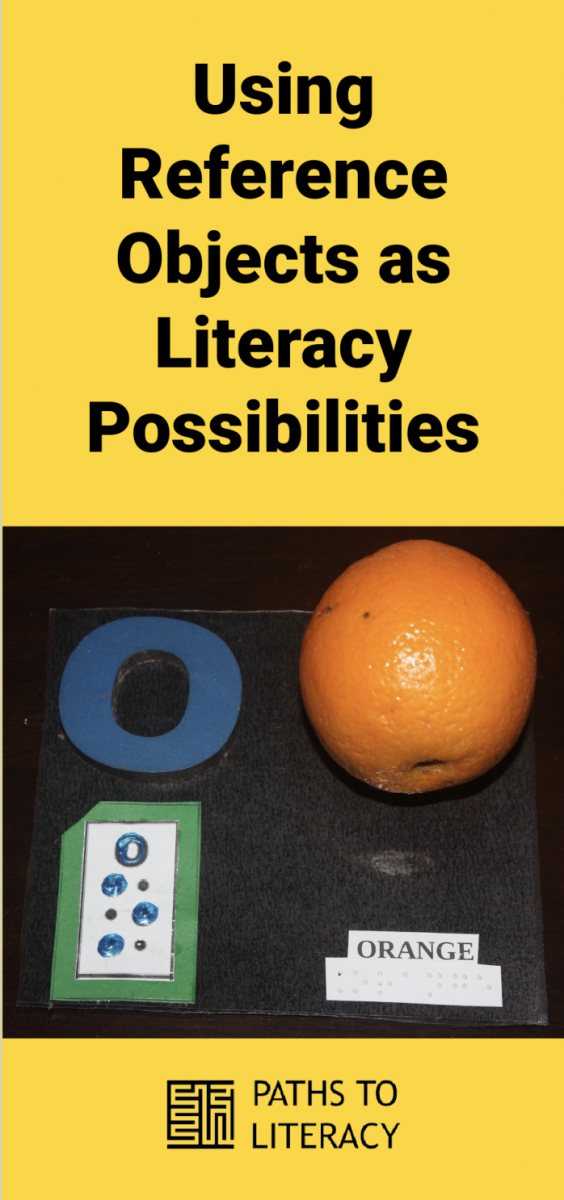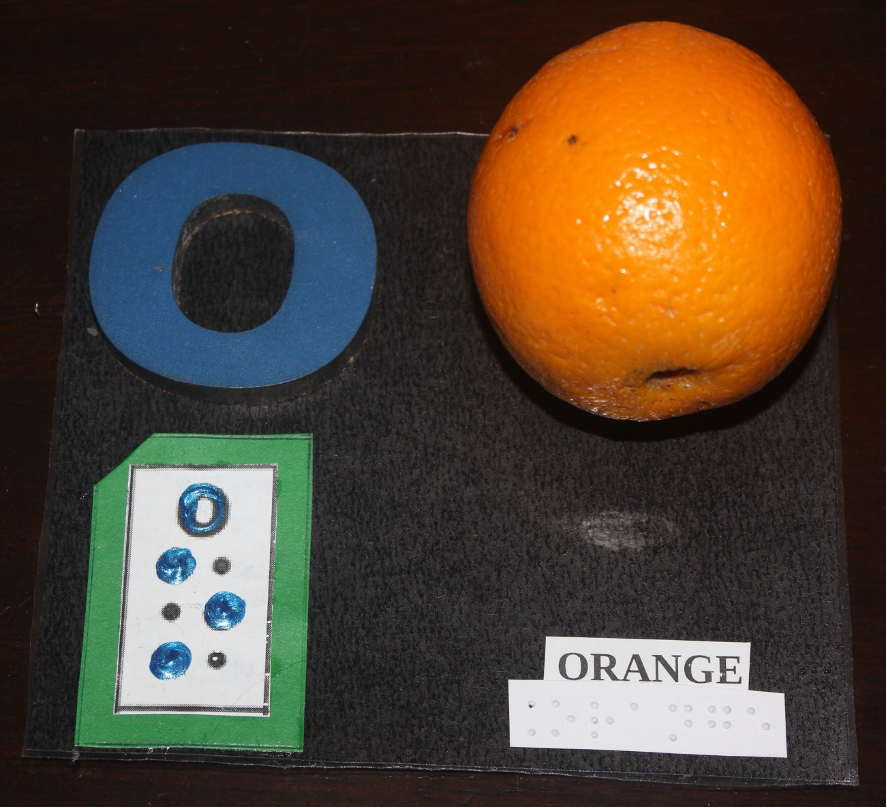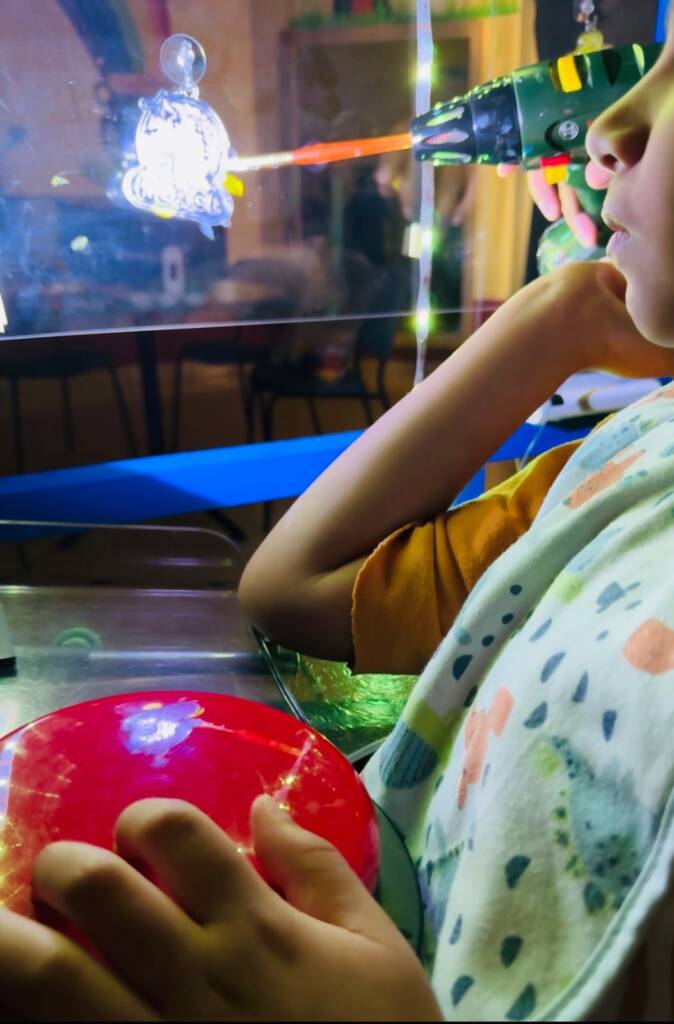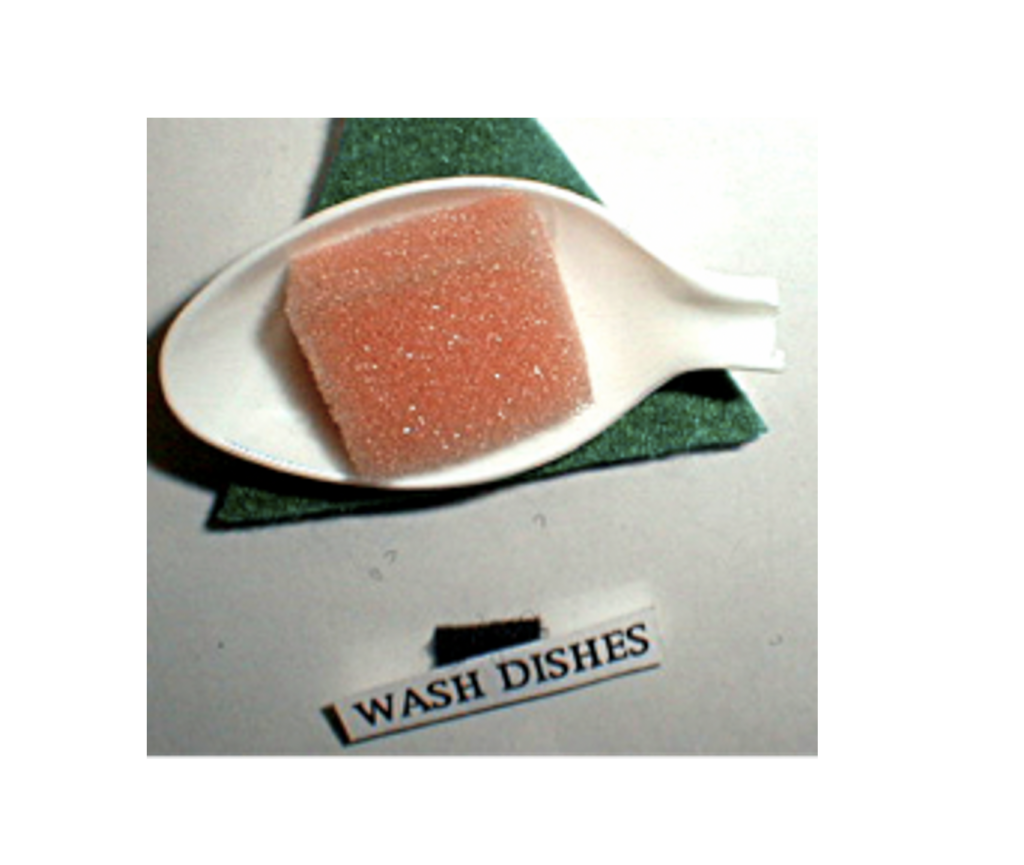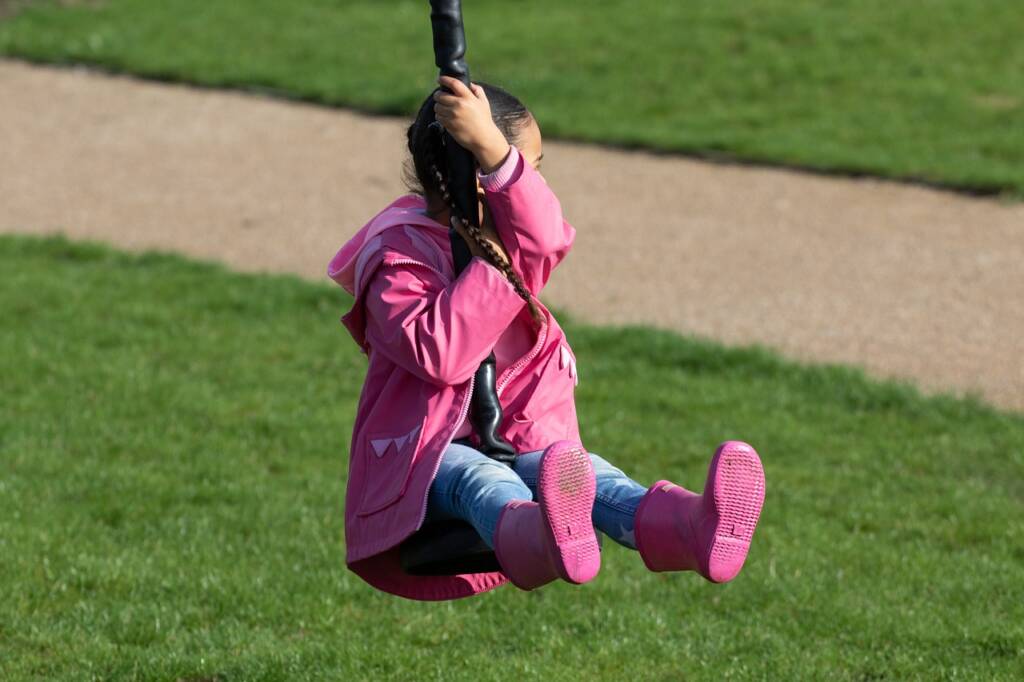Students with visual impairment and multiple disabilities generally need concrete information that favors the understanding of the most diverse concepts and information. They also need literacy support.
Visual impairment and multiple disabilities refer to blindness or low vision associated with other impairments, including the following: intellectual impairment, physical impairment, cerebral palsy, in addition to learning difficulties, complex communication needs, and fragile health conditions (Chen, 1995). This association of impairments varies greatly with regard to different combinations and intensities.
These students may face difficulties in understanding the information and this decreases their motivation to explore, initiate interactions and actively participate in the activities of their daily routine. Consequently, expectations for these students can be reduced and they can become more dependent on others and assume a passive condition (Chen, 1995).
This situation highlights the importance of providing meaningful learning opportunities that value the individual strengths of these students. Considering that their teaching needs are based on the acquisition of information through touch, it is believed that the use of objects associated with letters and words written in ink and in raille can favor their literacy through meaningful and concrete experiences.
Below are some images that relate letters, words written in ink and braille with concrete objects.
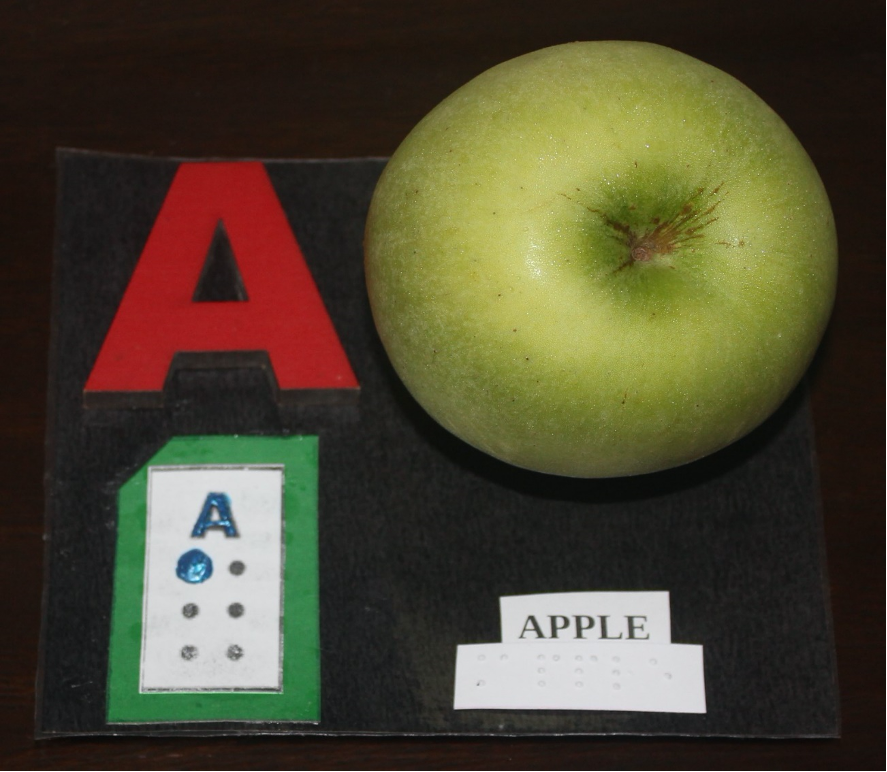
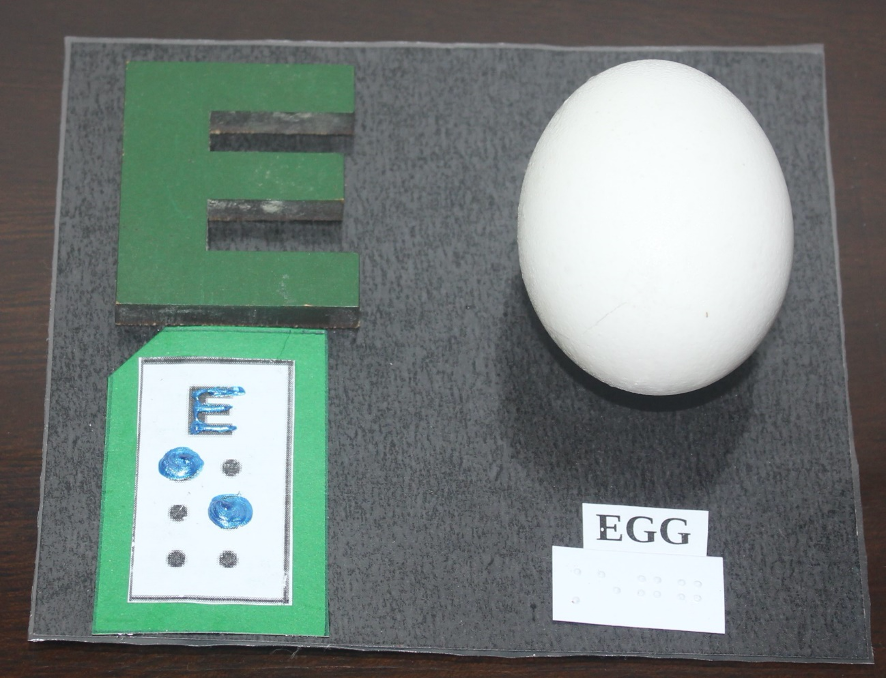
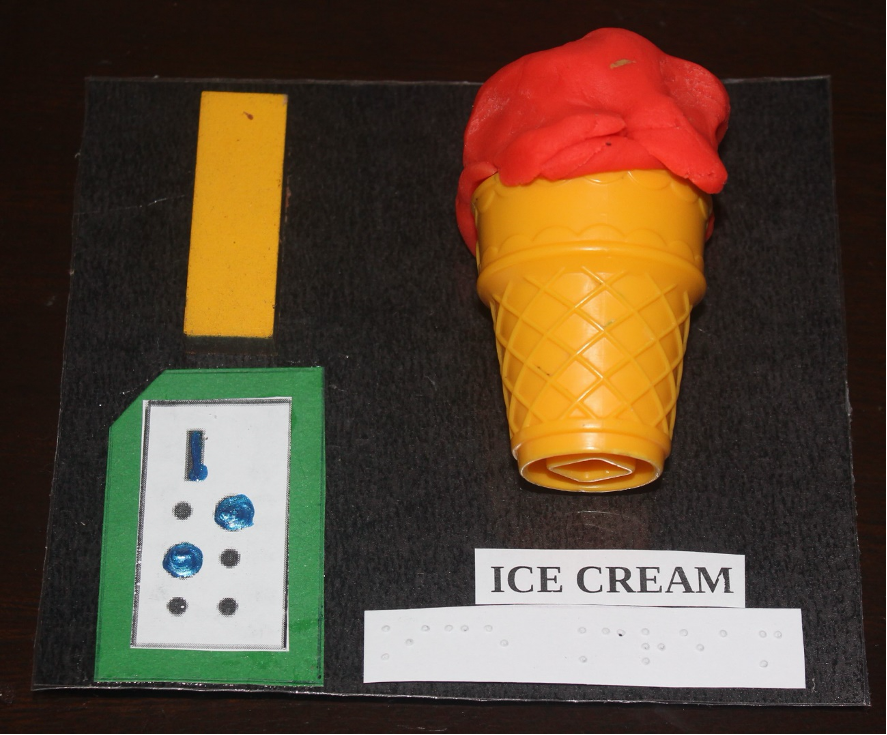
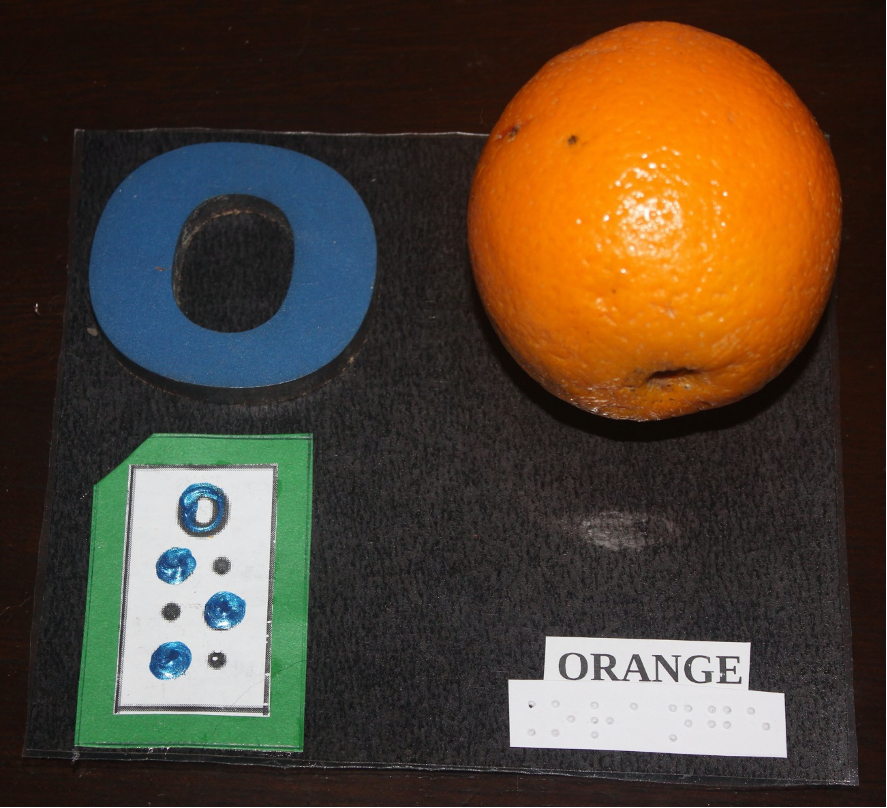
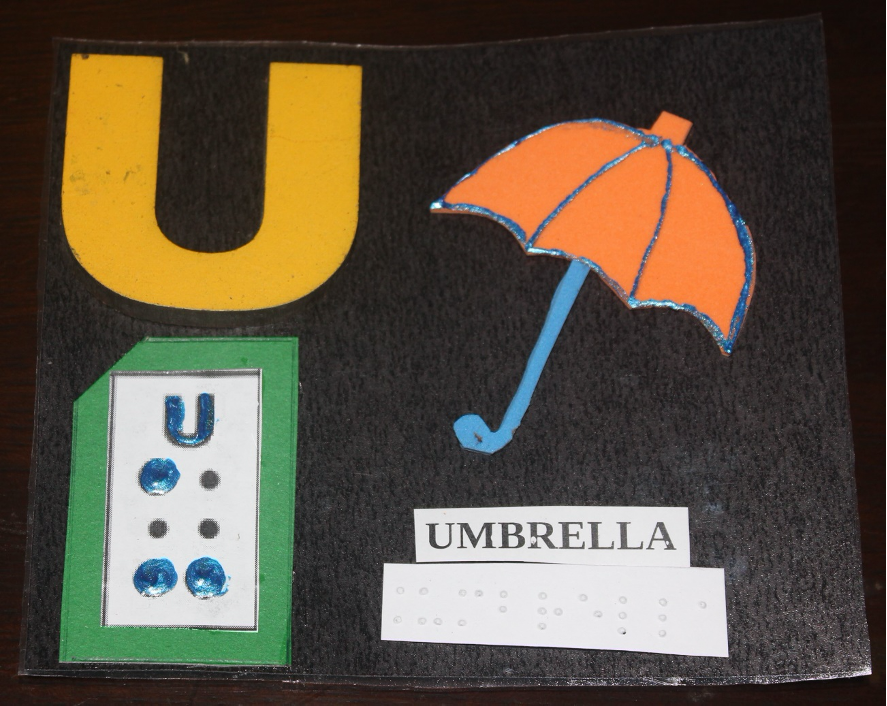
The cards shown above are made with high contrast colored items. The letters, captions and objects have Velcro backing to be, intentionally, handled by the student so that they can be explored and related to their references.
The use of this material is not random, it must follow a systematic instructional sequence. First, students must receive information that they will do a research activity of various objects, letters and words. They must be invited to participate in this activity and, if they agree to participate, they must be asked to handle the loose objects, which must be placed within a defined area, such as a box. This activity should take place in a playful way, as if it were a game of exploration of objects, letters and words.
Each object must be related to a letter and a word. Even if the student does not yet know how to read and write in braille or print, he should have the opportunity to feel the raised dots of braille and know the word that represents a certain object.
Finally, the letters, objects and words must be attached to the card to form a set of unique meanings, as the word, in print or braille, represents the object. At the end of the activity, the student must be informed that “it’s finished” and the cards should be placed in a container that represents the “it’s finished”.
This activity aims to provide conditions for students who are visually impaired with multiple disabilities to establish associations and understand that an object can be represented by a word. Furthermore, it is a concrete and significant activity that allows the student to perceive the separation and distance between reference objects and their referents. It is important to clarify that the results of this activity are not instantaneous, as it depends on the specifics of each student.
Other letters, words and objects can be tacked onto cards with the intention of helping the student to relate letters, words to objects.
I hope this activity is useful to other teachers. I am the coordinator of a study group on visual and multiple disabilities at the Bejamin Constant Institute – Rio de Janeiro/Brazil, called LABCÁTIL (Research Laboratory in Tactile Alternative Communication). If you have any questions you can email me: flavia.daniela@gmail.com.
References
Chen, D. (1995). “Who are young children whose multiple disabilities include visual impairment?” In: Chen, D. & Dote-Kwan, J. Starting Points: Instructional practices for young children whose multiple disabilities include visual impairment. Los Angeles, CA: Blind Childrens Center, p. 12-25.
